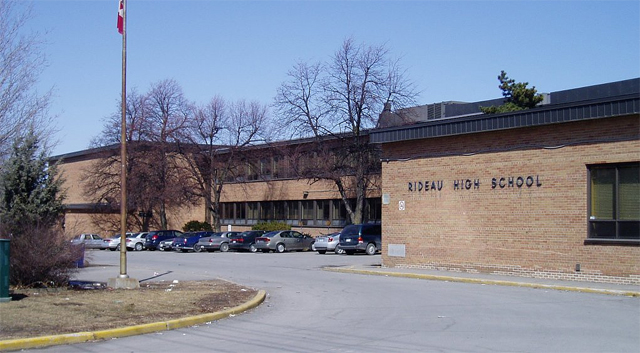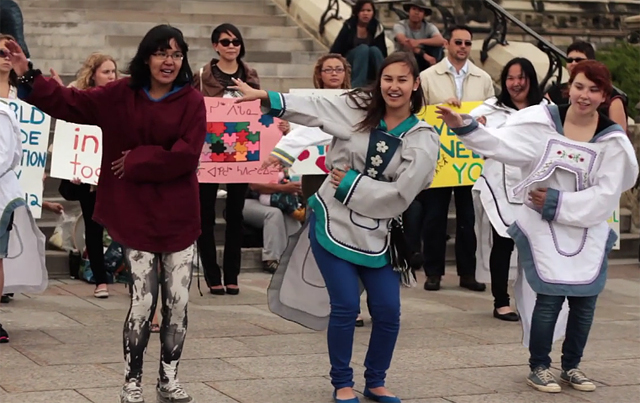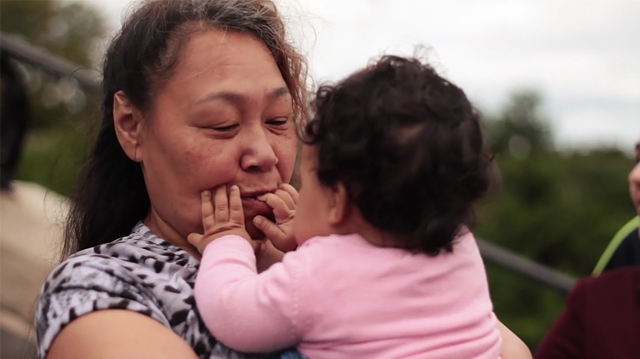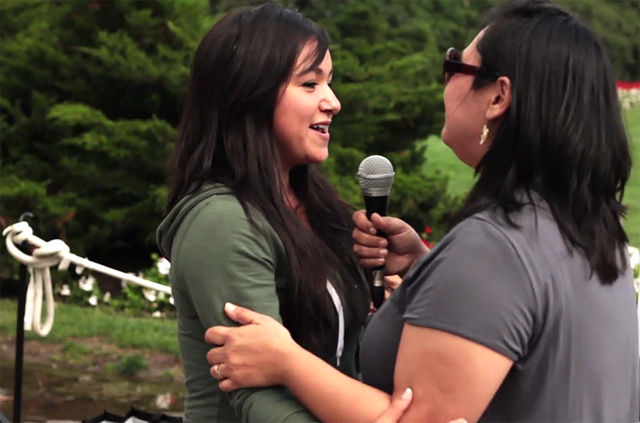A student club in Ottawa allows Inuit teenagers to get together and share foods from the North as they try to keep their culture alive in the city. The activities of the Inuit Culture Club at the Rideau High School reaffirm the Inuit heritage of the young people as they hang out together one afternoon each week, some conversing in Inuktitut, their native language. An article in the CBC on February 24 described the activities of the students as they cherish their traditional culture.

In the second floor classroom at Rideau, which is located almost three miles east of Parliament Hill in the Vanier section of Ottawa, the CBC interviewed Ooloosie Taukie, the Inuktitut language teacher at the school. She told the students that they should have an ulu, an Inuit knife, in order to properly cut and eat the Arctic char and the caribou meat that the grandmother of one of the students had donated for their afternoon feast. The room was decorated with indigenous artifacts and works of art.
The program for the Inuit youths is funded by the Canadian federal government department of Canadian Heritage and run by the Ottawa Inuit Children’s Centre (OICC). Emily Qitsualik, a student from Gjoa Haven, a community in Nunavut, told the reporter, “I like to talk to other Inuks and learn more about my culture and try to learn my language again. When I was growing up, I learned it, but I lost touch [with] it. It’s a part of our culture that we try to keep alive.”

Junior Ittusardjuat, another student, said that he misses traditional Inuit activities such as hunting caribou, walrus and seal. He finds living in Ottawa difficult—it’s too loud in the big city. Their school, Rideau, is the size of an entire community in Nunavut, so it can be intimidating. The Culture Club allows the kids to hang out, to feel comfortable in their traditions, and to just be themselves.
Ms. Taukie, the Inuktitut teacher, told the CBC, “When they’re in the lodge with us on cultural club day, they can be who they are—telling jokes, telling a story, talking in their own language.” She said she hopes the Inuit kids can stay in the city and be successful with their lives, as she has been. They should be able to put down roots but at the same time retain their culture and their core identities as Inuit young people.

But the article captured the worries bothering people involved with the Inuit Culture Club at Rideau. Funding for the Inuktitut teacher position runs out on March 29. Furthermore, the Rideau High School itself is likely to be closed at the end of the school year in 2017. Another Ottawa school, the Gloucester High School, has indicated it will accept any of the students from Rideau if it is closed, though the adults wonder if the Inuit kids will be willing to switch.
Kayla Power from the OICC is afraid that the Inuit students may drop out of school if they lose their space and the cohesion they’ve achieved at Rideau. The kids like the fact that Rideau is located in their own neighborhood, the Vanier area. “They feel very connected. They feel very comfortable. They have this small piece of this big school,” she said.
A scholarly article by Patrick and Tomiak (2008), “Language, Culture and Community among Urban Inuit in Ottawa,” provides a lot of additional information about the Inuit in that city. The authors made it clear that although some Inuit in Ottawa have good jobs and have been able to move to upscale suburban areas, the majority live in working class Vanier, where the Rideau High School is located and where the authors interviewed Inuit people in order to learn about their community.
Some Inuit expressed to the authors, both of whom are from Carleton University, that they hoped to get out of Vanier, but for many that section of Ottawa was their community—livable and dynamic. One woman said, “you know, Vanier’s not that bad (p.60)….” Another participant in the study indicated a desire to move in closer to Vanier, where various family members lived already.

Patrick and Tomiak described various ways that Inuit adults as well as children learn and preserve their culture. They pointed out that some adults learn Inuit songs as well as words so they can better participate with their children in Inuit cultural learning experiences. While practicing such words and songs may represent only first steps in learning the language, it has important symbolic meaning. Such singing conveys a sense of connectedness that is far more important than just learning the language alone.
The authors reported some interesting facts about the Inuit community in Ottawa. One was that many people could rarely make return visits to their home communities in the North because of the high cost of travel. Another was that they have reasonably strong feelings of unity as a group, based primarily on the sense that they all share more or less similar experiences—of moving from small traditional communities in the North to the big city where they have to cope with many difficult challenges.
Some of the Inuit who participated in the study indicated that they had experienced discrimination in Ottawa but they felt that in order to survive in the urban environment they had, of necessity, to become stronger as individuals. They had to speak up when they heard racist statements. Some of the adults said that their children had had racist taunts expressed to them in school—“go back to China,” for instance (p.62).
Another problem that Inuit had experienced in Ottawa was the psychological traumas they get from feelings of isolation in the city. They have lost their sense of groundedness. But the OICC helps answer that issue. The organization, cited by the recent CBC article as helping establish the program in the Rideau High School, provides a sense of welcome, of community, of safety. It was in 2007, and evidently still is, a place for people to gather and enjoy the feeling of being part of a small community.
If the Rideau High School is closed, it is likely, to judge by Patrick and Tomiak, that the OICC will try to find another way to give a sense of belonging to the Inuit school kids.